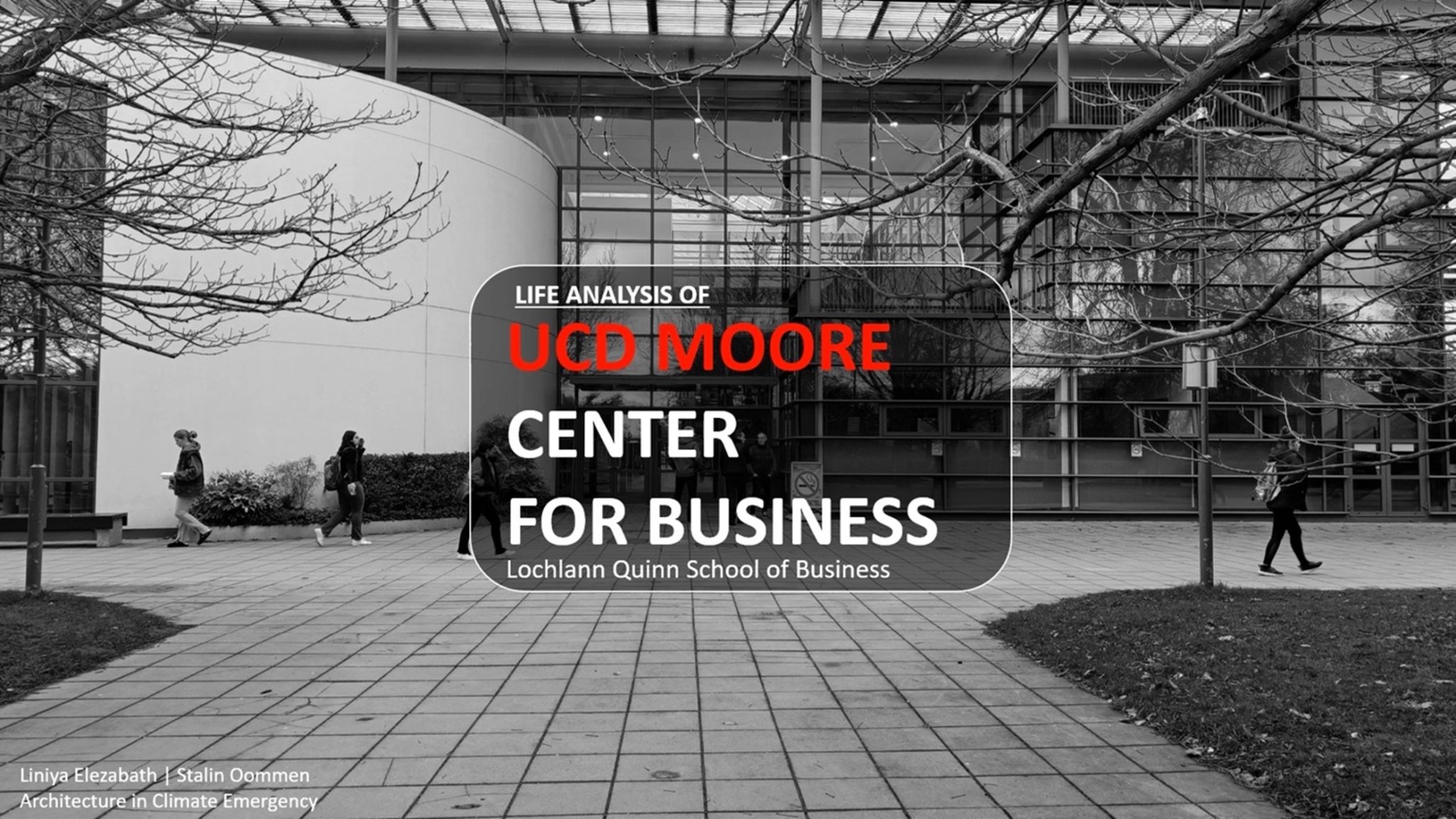RKD team up with UCD, Coady, BDP and the OPW in a first-of-its-kind collaboration between industry and academia on building life cycle analysis in Ireland. Industry, learning and research combine.
Richard O’Hegarty and Sean Hogan
Despite the recent wave of interest in building life cycle analysis and embodied carbon, the topic remains in a relatively nascent phase of development. The environmental impact of the Irish built environment has now been quantified, with its construction and operation accounting for just under 40% of all GHG emissions [1]. A significant portion which requires immediate attention. But when buildings are examined individually, and subsequently compared to each other, the analysis is often arbitrary, owing to the absence of like-for-like comparisons [2].
To try and uncover some of the challenges with life cycle analysis in the built environment, UCD’s Architecture in a Climate Emergency Master’s module, led by Dr. Oliver Kinnane, invited RKD to participate in a novel student-industry collaboration. RKD was delighted to facilitate this project, providing drawings and BoQs for several buildings, offering industry experience and expertise throughout the project.
The project
The students were taught the key principles behind the embodied carbon of construction materials and methods, and shown some basic life cycle analysis tools. They were split into groups, and each group was given a real building to analyse. Their brief was purposely kept broad, and they were graded on their understanding and ability to rationalise assumptions throughout the process.

Figure credit: Students Liniya Elezabeth and Stalin Oommen

Figure credit: Students Alshema Mousa, Danielle Kirkpatrick and Thanat Thanapornpakornsin
What we learned?
Our initial hope was to add more data to our ever-growing inhouse LCA database, but after attending the final presentations what we learned was something different, something perhaps more valuable.
1. Is simpler better?
All student groups used different tools, some even used multiple tools. What we concluded was that the choice of tool could be broadly categorised into two groups:
- Those that are simpler to use and yield more representative results, but which don’t enable deep understanding of the materials.
- And those that are more complex to use, allow for deep understanding of the materials, but which are prone to significant errors.
A user friendly tool will enable more representative results but the depth of learning is prohibited by the black-box nature of those tools.
2. Greater variability in the results is due to the methodology used rather than the materials specified
We found that, upon questioning at the final presentations, the greatest differences in the results were not due to the materials or construction type but due to the individual approaches used.
These uncertainties were due to:
1) the different defined scope of works and
2) different life cycle stages assumed important.
This finding reinforces our in-house strategy of prioritising consistency and rigour over complexity when it comes to life cycle analyses.
3. The design stage is crucial
A consistent conclusion from all student projects was that the greatest savings in embodied carbon are realised at the design stage.
Reflection
It was our pleasure to add value to a unique study which we hope will continue to develop in the coming years and thank the students for their excellent presentations.
Once again, design stage thinking is highlighted as a key enabler to sustainable buildings. Get it right early and reap the rewards throughout the building’s whole life.
References
[1] R. O’Hegarty and O. Kinnane, “Whole life carbon quantification of the built environment: Case study Ireland,” Build. Environ., vol. 226, p. 109730, Dec. 2022, doi: 10.1016/j.buildenv.2022.109730.
[2] R. O’Hegarty, “The Embodied Carbon of Buildings,” Share your Green Design, May 30, 2022. https://www.shareyourgreendesign.com/the-embodied-carbon-of-buildings-2/ (accessed Aug. 04, 2022).